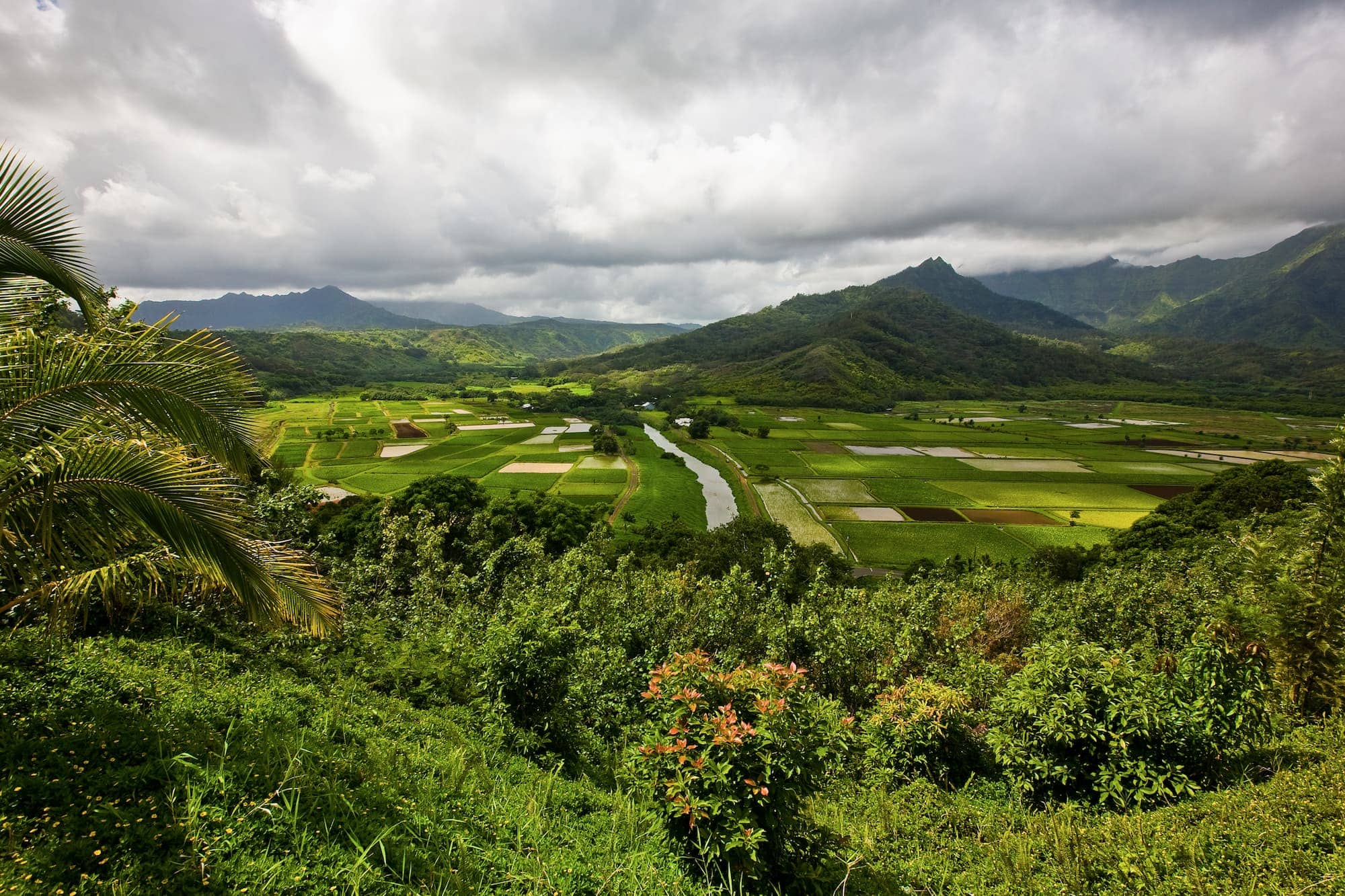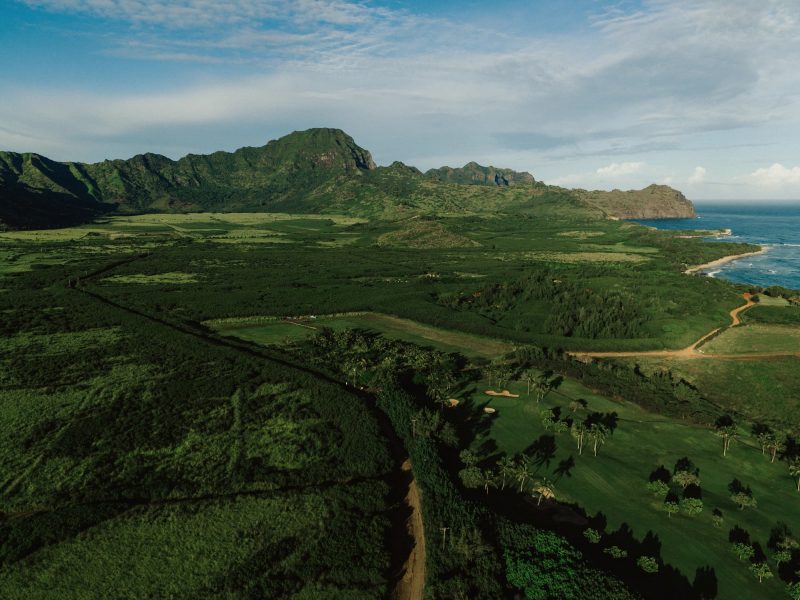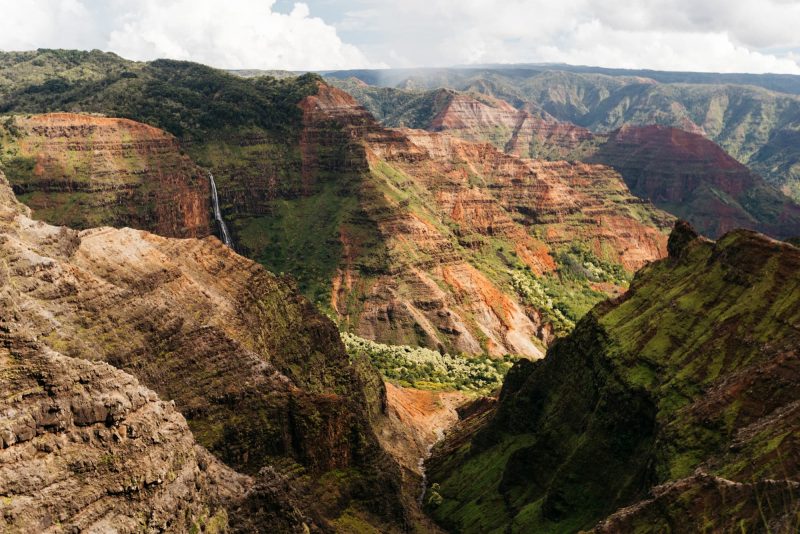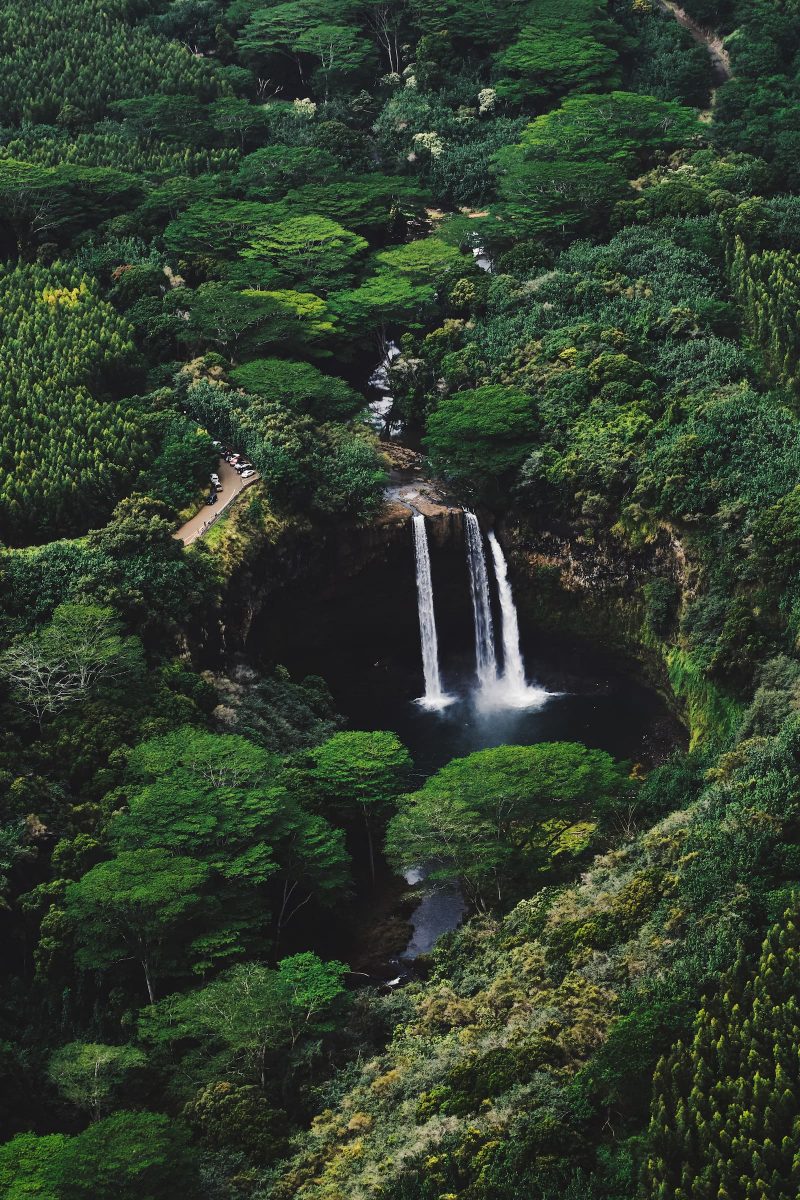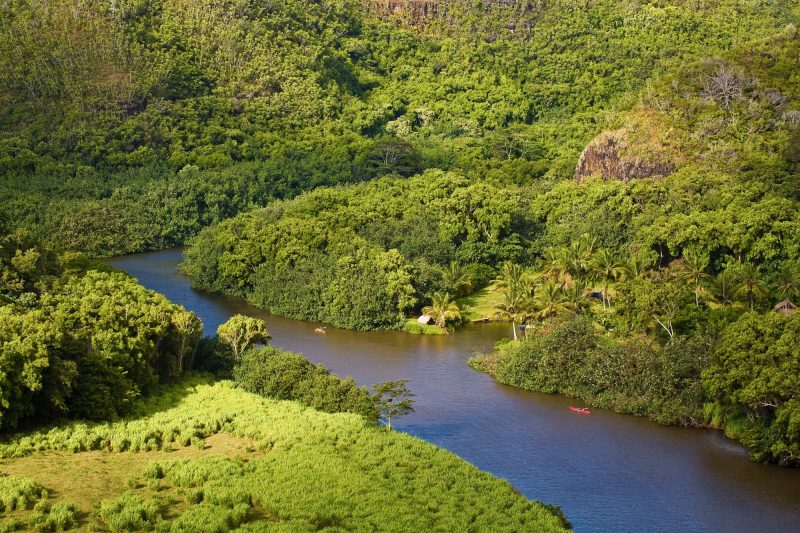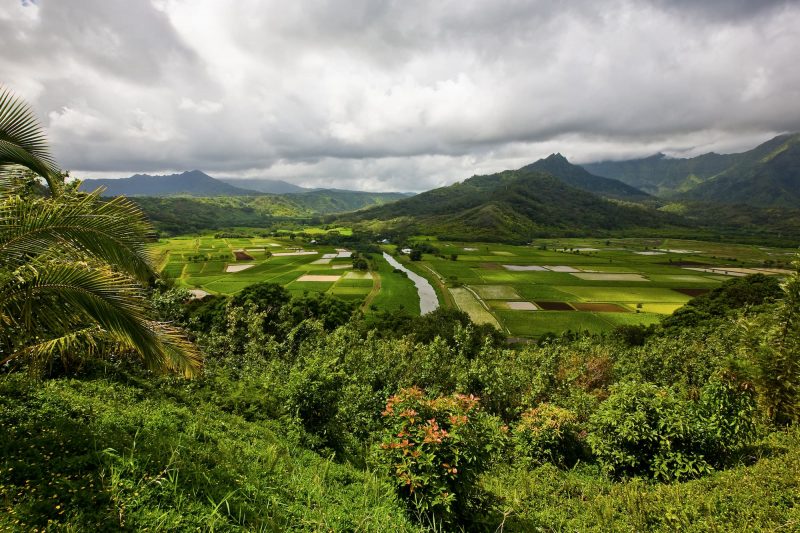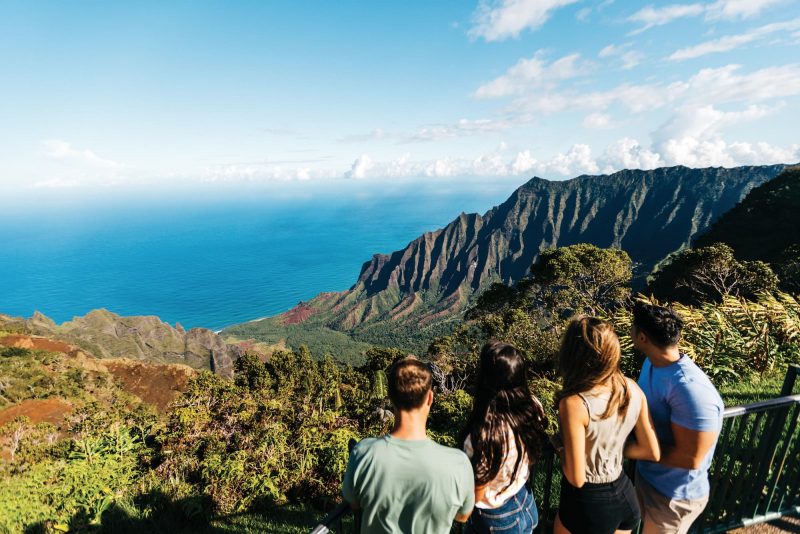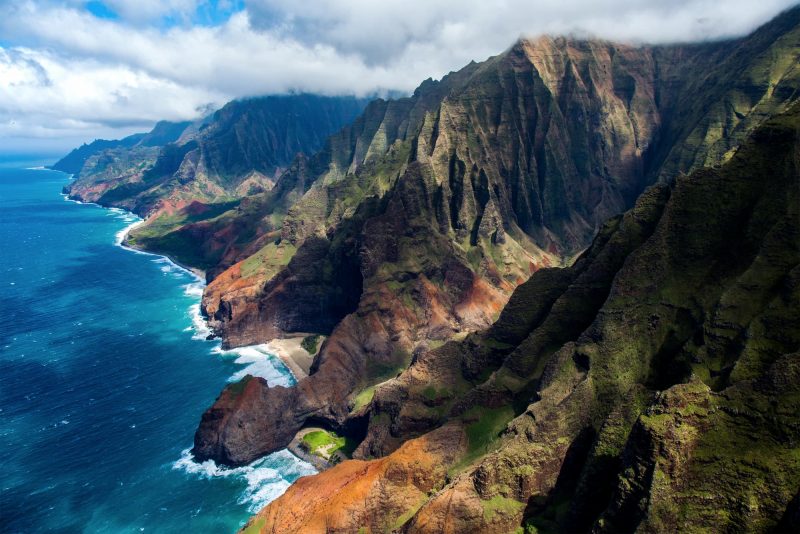Kauaʻi is the northern-most island of Hawaiʻi, comprised of one volcano, Mt. Waiʻaleʻale. Known as “The Garden Island” for its lush, tropical landscape and small-town, rural feel, Kauaʻi has an abundance of natural beauty to share with visitors, including some of the most dramatic formations in all of Hawaiʻi.
In the north, you’ll find the jagged, breathtaking Nāpali Coast, and the south is home to one of Hawaiʻi’s most unexpected geological offerings, Waimea Canyon, also known as “The Grand Canyon of the Pacific.” The two are linked by Kauai’s one and only main road, cruising through Līhuʻe, the capital, and small beach towns, like Kapaʻa.
Table of contents
Table of Contents
- Day 1: Arrival to Poipu
- Day 2: South Shore Exploration
- Day 3: Waimea Canyon
- Day 4: Road Trip to Hanalei
- Day 5: Napali Coast
- Day 6: North Shore Exploration
- Day 7: Journey South & Departure
We recommend a week to explore the entire island at a relaxed, enjoyable pace. Our suggestions below are not meant to be set in stone; rather, we hope they can serve as a template and example of the island’s main regions, water activities, attractions, and points of interest. Please take from our itinerary what you will, switch around the order of days or where you’ll stay, and sprinkle in your own personal interests to create the best possible itinerary (for example one of these 14 bite-sized things to do on Kauaʻi 👍).
We hope you have a good time on Kauaʻi, and please remember to do your part in protecting the island by respecting its environmental, cultural, culinary, and historical offerings. Mahalo!
Day 1: Arrival to Poʻipū
Chances are, you’ll arrive at Līhuʻe airport after a long journey. We understand that air travel can be exhausting, but fly easy knowing that a slow-paced, relaxed atmosphere awaits on Kauaʻi. With just about 75,000 residents and large amounts of protected land, there’s open space in every direction, with lots of room to breathe. As you grab your rental car and make your way to Poʻipū, you’ll pass by ranches, farms, jungles, and forests, including an eucalyptus tree tunnel that serves as the gateway to the south shore.
We suggest Poʻipū as your first hub not necessarily because it’s where you’ll want to spend the most amount of time, but because it offers a good combination of location, services, and accommodations that will serve your journey well.
Because of its position in the far north of the chain, Kauaʻi experiences more rain, stronger currents, and more sporadic good ocean conditions than perhaps any other island. Many beaches on Kauaʻi can have unfavorable swimming conditions throughout the year, especially during the winter months, so if you want to pencil in some beach time and a dip, you need to be shrewd with your selection. The Poʻipū area offers lifeguarded beaches that are generally swimmable, and quick access to other beaches of interest, like Shipwreck’s. Poʻipū i also one of the better snorkeling spots on Kauaʻi.
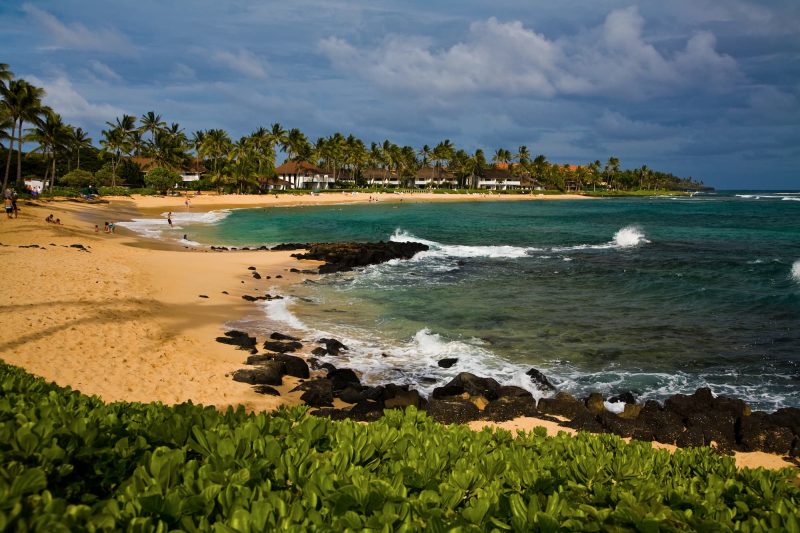
Poipu is a popular beach with a shallow, protected swimming area, snorkel & surfboard rentals & a playground. Image: Hawaii Tourism Authority (HTA) / Tor Johnson
You can find any type of lodging you’re looking for in Poʻipū – resorts, hotels, condos, and vacation rentals – and easy access to services, like groceries and local restaurants. We like the idea of relaxing and recharging here for a night or two before moving forward with a more aggressive itinerary.
Day 2: Poʻipū and the South Shore
You’ll probably wake up early this morning, but don’t fight it. Early-morning coastal walks are perfect after a long flight, and Poʻipū is home to a good one. The Mahaulepu Heritage Trail wanders the coastline for a couple miles, with nice ocean views and a variety of historical and cultural sites.
If you prefer something slower in the morning, there are a number of good beaches in the area. Poʻipū Beach, Brennecke’s, Shipwreck’s, Kiahuna, Baby Beach, and Mahaulepu are all within easy reach and delightful in the early morning.
Ride Kauai’s Longest Ziplines!
Ride Kauai's Longest (1/2 mile) Ziplines. Great for all ages with a "ground school" to teach young kids and first timers.
from:
$159
What is a suggested tour?Our suggested tours are hand-picked tours that receive consistent good reviews, give back to the community, and work hard to minimize their impact on the environment. Read more about these tours on our website.Today is the calm before storm. Starting tomorrow, you’ll have a string of adventures that will keep you out and about all day long. We recommend sticking close to home today – hit a nearby beach, hike a nearby trail, or check out a nearby cultural site like the Makauwahi Cave (now closed) or the Kāneiʻolouma Heiau – but mostly, stay nearby and get to know the south shore. Kōloa was home to one of the first sugar cane plantations in the islands in 1835, and the Kōloa Heritage Trail can show you how it shaped Hawaiʻi.
There are a couple golf courses in Poʻipū, a national botanical garden, and the Spouting Horn Blowhole is not too far.
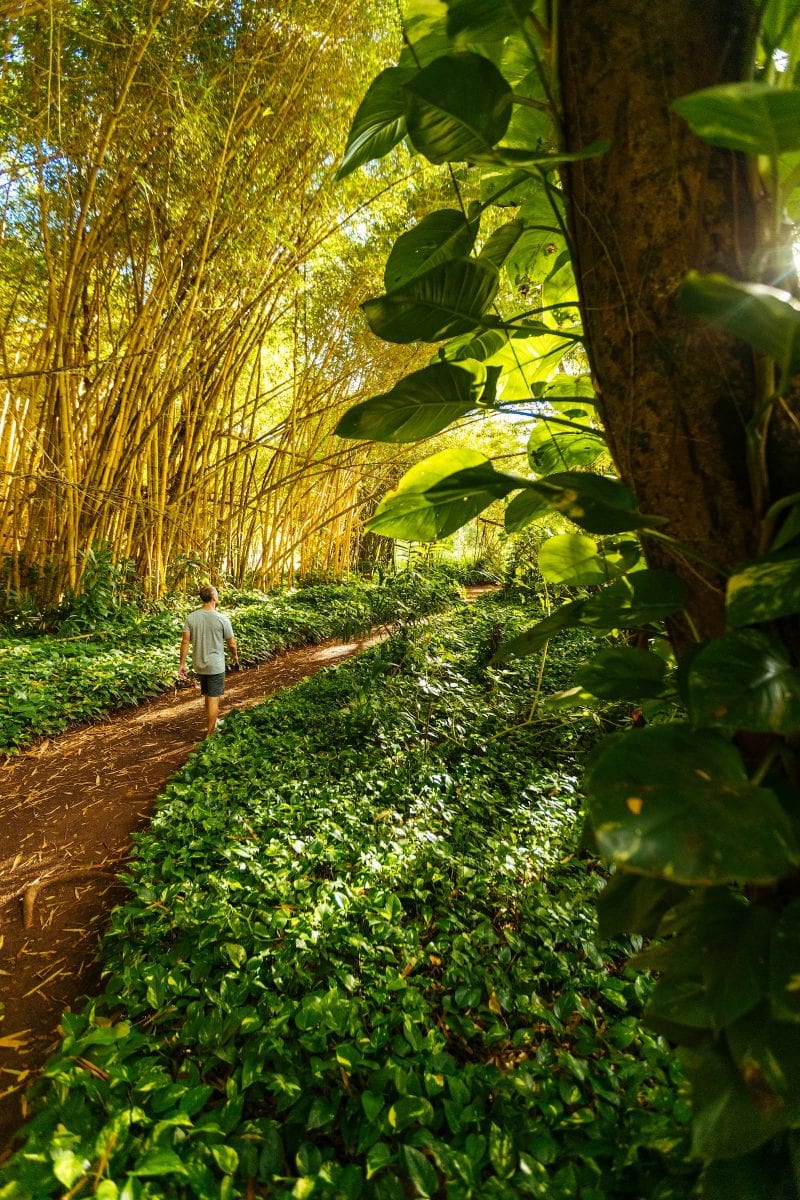
The Allerton Garden is a borgeous botanical garden beside Lāwaʻi Bay, in a valley transected by the Lāwaʻi Stream. Credit: Hawaii Tourism Authority (HTA) / Ben Ono
If you insist on doing something outside of Poʻipū, we recommend Polihale State Park (one hour drive). Located way out on the west coast, it’s a completely undeveloped big sandy beach, with gorgeous views of the western edge of the Nāpali Coast, and, due to being so far out of the way, is typically not so crowded. Keep in mind that car rental companies often have restrictions against driving the dirt access road.
Pick up a bottle of locally-made Kōloa Rum for homemade sunset cocktails. Visit one of the area’s many restaurants for dinner. Get to bed early and rest up for tomorrow’s big day.
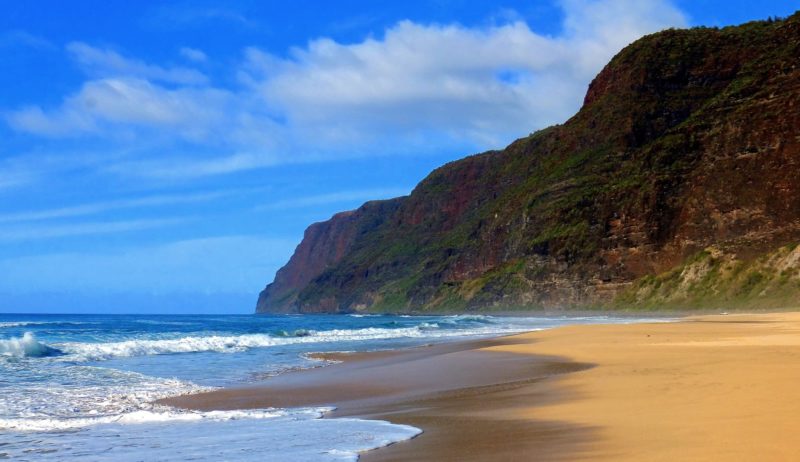
Polihale State Park is a remote wild beach and a great choice for those people seeking isolation. Image credit: K E V I N, source.
Day 3: Waimea Canyon
Have breakfast and a morning at leisure, then head out mid-morning. Stop at Kukuiula Market for a smoothie and to pick up a homemade lunch to-go. You’ll also want to bring plenty of water, snacks, sunscreen, firm hiking/walking shoes, and a couple layers (Waimea Canyon is located at 3,500 feet or more).
Today’s destination is Waimea Canyon, the “Grand Canyon of the Pacific.” It’s about an hour’s drive from Poʻipū, the second half up a winding mountain road. Take it slow, and enjoy the views of the ocean (look for the island of Niʻihau off in the distance) as you climb up.
Located at 3,500 feet above sea level, Waimea Canyon is about 14 miles long, a mile wide, and more than 3,600 feet deep. Waimea, which means “reddish waters,” gets its name from the color of the rock, which in turn effects the color of the water as it runs down and out the canyon.
Waimea Canyon State Park is very visitor friendly, offering a variety of lookouts and hiking trails through which to explore the area. Also, Kōkeʻe State Park is adjacent to the canyon, with a myriad of other trails to explore.
First, we recommend driving around to the different lookouts that offer different perspectives of the canyon: the Waimea Canyon Lookout, the Puʻu Ka Pele, and the Puʻu Hinahina Lookout. There’s also the Kalaulau Lookout in Kōkeʻe. Then, head out on an afternoon hike. If you need help choosing a trail, see our guide to hiking on Kauaʻi.
After the hike, around late afternoon, make your way back to Poʻipū. Enjoy the views as you descend back to sea level. This will be your last night in Poʻipū, so enjoy a walk, swim, or drink for the sunset and dinner at one of the many restaurants. Have your bags ready to go in the morning.
Day 4: Road Trip to Hanalei
Wake up early, grab breakfast, and then pack up the car. The destination is your new accommodation in Hanalei on the North Shore, but you’ll make a day of it by checking out some of the sights along the way.
From Poʻipū, you’ll head north on Kauaʻi’s main road. The first hub you’ll come to is Līhuʻe, the capital. We encourage a stop at the Kauaʻi Museum, where you can learn the history of the island’s monarchy. Waterfall chasers will want to make a stop at Wailua Falls, which can be accessed via Līhuʻe.
Continue north to the town of Wailua, a hub for outdoor recreation. The Wailua River is the only navigable river in Hawaiʻi, and you can rent a kayak from one of the vendors at the mouth of the river (there are also guided tours of the river as well). Opaeka‘a Falls, the Kuamoʻo Nounou Trail, and the Sleeping Giant Trail are all great options to explore in the area.
The next community you’ll reach is Kapaʻa. It’s a nice place to stop for lunch and a walk along the coast. Pono Market is a favorite for local dishes, like plate lunches, or if you prefer, a place like Street Burger demonstrates Kauaʻi’s trendy and modern craft offerings. If you’re looking for take-home gifts, you can grab a cup of locally grown coffee in the main part of town (perhaps from Java Kai) and window shop some of its souvenir stores. Kapaʻa Beach is shallow and typically not great for swimming, but there is a long beach path that winds along the coast, nice for a walk or bike ride.
Once through Kapaʻa, you’ll pass through many rural areas with large ranches, big forests, mountain views, and low-level development. Look for fruit stands and local markets along the way. Depending on time, you can stop in at a beach, such as Anahola or Moloaʻa.
The first town you’ll reach on the north shore is Kīlauea. It was once home to a large guava plantation, and today, it has diversified its personality. It is the gateway to the Kīlauea Point National Wildlife Refuge and Lighthouse, where many Hawaiian sea birds nest, and its downtown now offers a coffee shop, fish market, and wine bar.
After Kīlauea, you’ll come to Princeville – a well-manicured resort area – and then Hanalei, the main hub of Kauaʻi’s north shore. Hanalei is home to many taro farms and agricultural fields, as well as a crescent, half-moon shaped bay that’s backdropped by the mountains of the Nāpali Coast.
After settling into your accommodation, spend the remainder of the day wandering around the area and enjoy dinner at one of the restaurants in Hanalei town. Rest up after the stop and start of the drive; tomorrow, you’ll dive head first into the natural beauty this area of the island has to offer.
Day 5: Nāpali Coast
The Nāpali Coast is the shining star of Kauaʻi’s north shore, and one of the most dramatic displays of volcanic erosion in all of Hawaiʻi. Shaped by millions of years of rain, the peaks of the Nāpali Coast are jagged, with deep grooves and plenty of waterfalls. There are several ways to experience the area, including on foot, by boat, or via helicopter.
See our Nāpali Coast guide for more information and frequently asked questions.
Explore the Nāpali coast by foot
The Kalalau Trail starts at Keʻe Beach and traverses the ups and downs of the coastline, going 11 miles in total out to Kalalau Beach. Most people hike the first two miles to Hanakāpī‘ai Beach and Falls. This is an absolutely gorgeous hike, but be aware that there are significant climbs and descents, so bring plenty of water and snacks. Also, swimming at Hanakāpī‘ai Beach is extremely dangerous, so avoid the temptation to do so. Many people have unfortunately died there due to strong currents.
See the Nāpali coast from the water
Seeing the Nāpali Coast from the water provides a wonderful perspective on its size and stature. During the calm summer months, you can rent a kayak from a local outfitter in Hanalei. Or, you can jump on one of the many boat tours that run the length of the coastline. Some include snorkeling opportunities.
Napali Adventure & Snorkel from Hanalei
The only licensed boat tour company offering raft tours departing from Hanalei Bay!
from:
$315
What is a suggested tour?Our suggested tours are hand-picked tours that receive consistent good reviews, give back to the community, and work hard to minimize their impact on the environment. Read more about these tours on our website.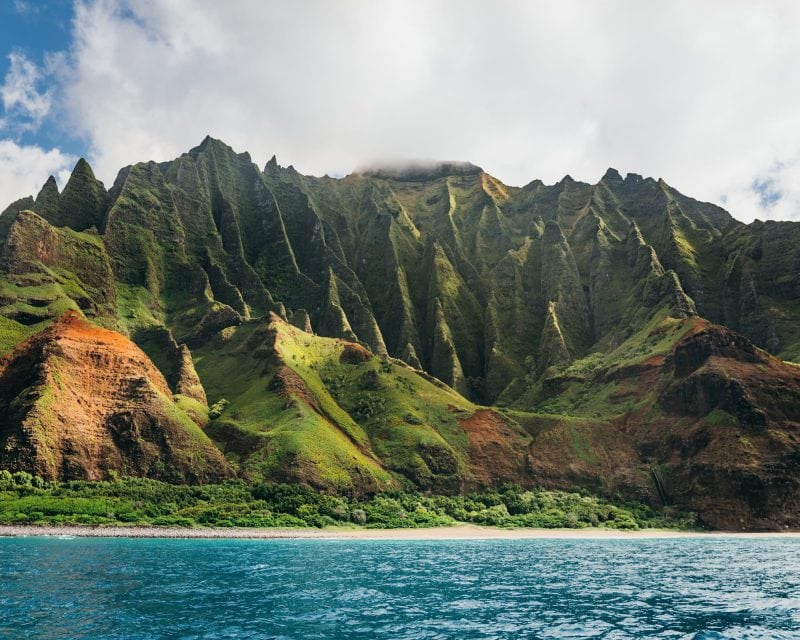
The Nāpali coast seen from the water is one of the iconic images Kauaʻi is famous for. Credit: Hawaii Tourism Authority (HTA) / Vincent Lim
See the Nāpali coast from the air
A third way to experience the area is via helicopter tour. It is by far the most expensive of the options, but it often includes a flyover of Waimea Canyon and other sections of the island as well.
Note: Because parking and access to areas of the north shore have recently changed, you may consider forgoing your vehicle in favor of taking the north shore shuttle. You can hop on and off at various points without worrying about parking your vehicle, which is usually a challenge.
Day 6: North Shore Exploration
Wake up slow this morning in Hanalei. Take a morning surf (rent a board or take a lesson from a local outfitter, such as Hawaiian Surfing Adventures), enjoy a beach walk, or browse the town, coffee in hand. There are many other things to do in Hanalei.
After seeing the grand prize yesterday (Nāpali Coast), today will be a chance to explore all the other nooks and crannies of the north shore. There are an abundance of beaches to check out: Keʻe, Tunnels, Wainiha, Hāʻena, Cannons, Makua – the list goes on. Surf lessons, kayak and sup rentals, and boat tours are also offered in bulk out of Hanalei. An alternative kayak experience can be had on the Hanalei River.
If you’re interested in the local agriculture, try a farm tour, for example at Hanalei Taro (be sure to try their food truck, Hanalei Taro & Juice, for local plate lunches and poi). For a nearby hike, try the Hanakāpī‘ai Falls Trail, the Okolehao Trail, or the Powerline Trail, among others. For a combination of local culture and flora, check out the Limahuli Garden & Preserve.
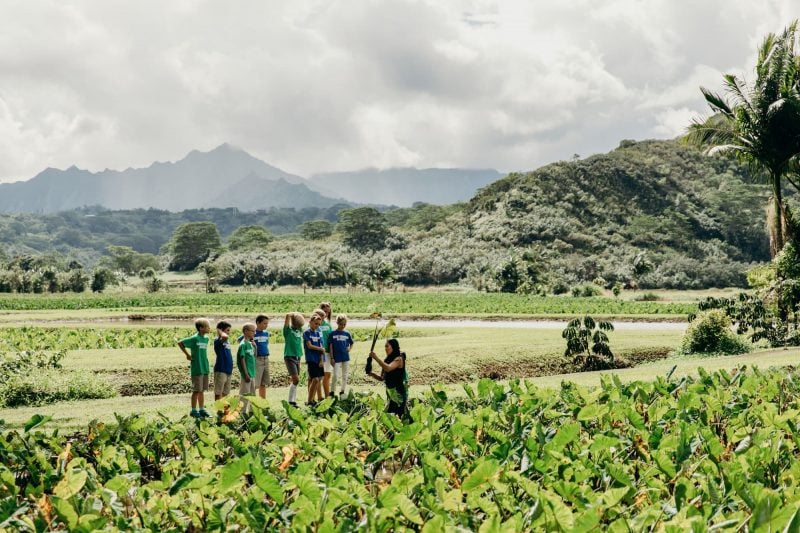
Touring a Taro Farm close to Hanalei. Credit: Hawaii Tourism Authority (HTA) / Heather Goodman @hbgoodie
Note: Because parking and access to areas of the north shore have recently changed, you may consider forgoing your vehicle in favor of taking the north shore shuttle. You can hop on and off at various points without worrying about parking your vehicle, which is usually a challenge.
Day 7: Journey South & Departure
Most likely, your flight departing Kauaʻi will be late in the day or even at night, so be ready to make the most of your final day on the island. In the morning, you can enjoy one final activity in Hanalei – such as a hike, kayak, surf, or beach relaxation – before making your way back down south to Līhuʻe.
Our recommendation would be to leave early and, similar to Day 4, make a road trip of the journey. It’s a great chance to stop and see anything you might have missed on the way up, or check out something you’ve heard about or been recommended (for options, see Day 4 itinerary suggestions).
If you arrive in Līhuʻe early, you can check out the local craft beer scene and have a pre-flight drink/bite at Kauaʻi Beer Company, or enjoy a locally-beloved noodle dish called saimin at Hamura Saimin or Kakoʻs Saimin.
From there, you are just minutes from the airport. As you board your flight back home, remember that we don’t believe in goodbyes in Hawaiʻi. Instead, we like to say, “A hui hou,” or, “until we meet again.”
